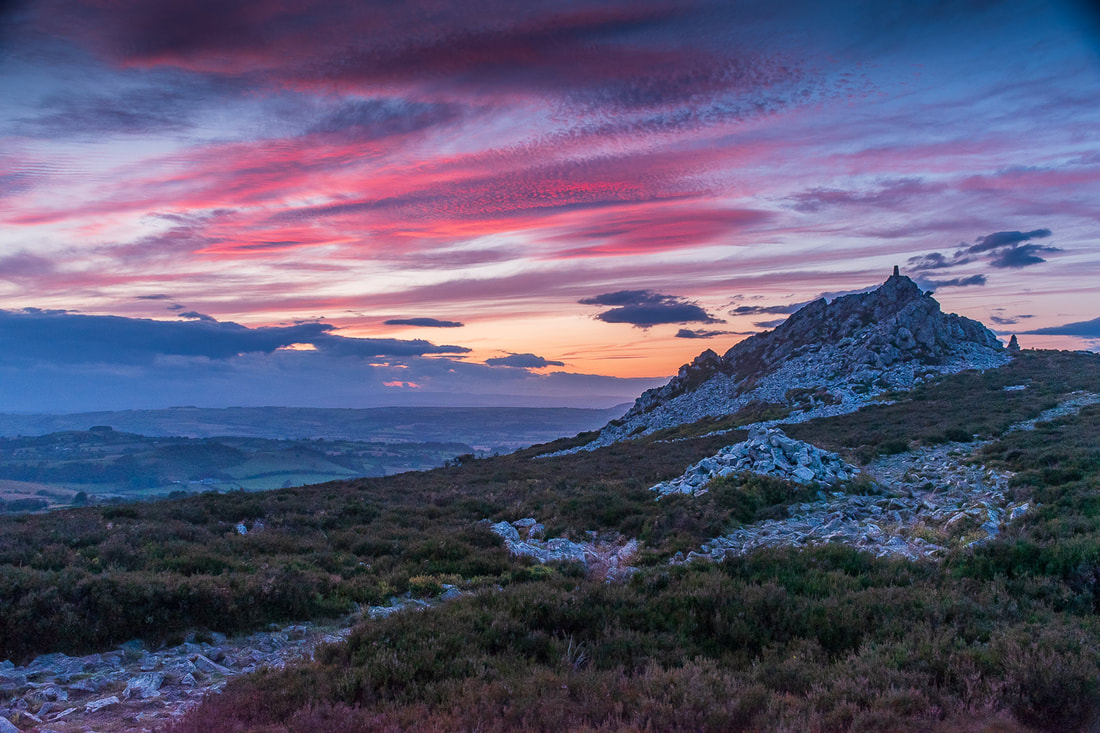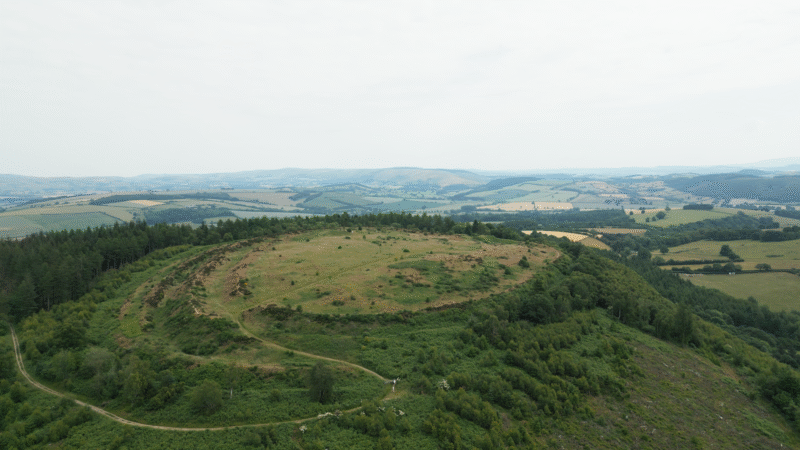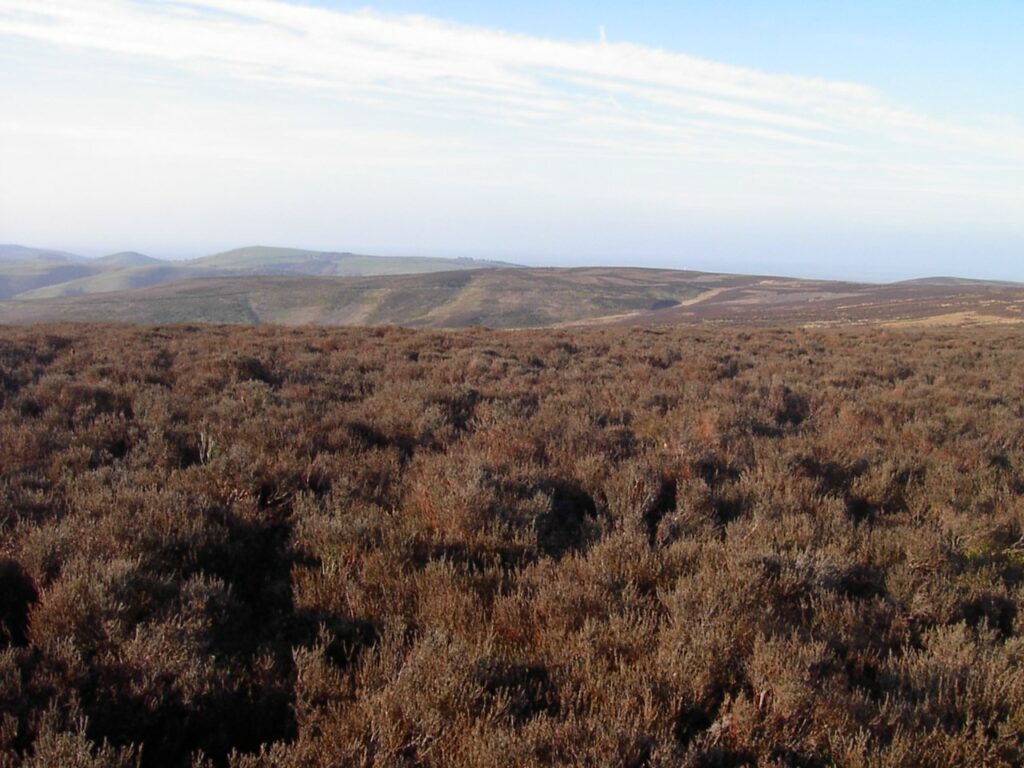Birdsong and Big Skies
The Best Spots for Birdwatching in South Shropshire
Discover the best birdwatching spots in South Shropshire, where ancient woodlands and rolling valleys create a haven for birdlife. Spring and early summer are the best times to visit, when migratory birds return and birds of prey are most active. From majestic red kites soaring above the Clun Valley to elusive woodpeckers drumming in Mortimer Forest, South Shropshire is teeming with incredible species. Whether you're an experienced bird spotter or looking for ways to enjoy the uplifting sounds of spring warblers, visit the best spots offering the perfect backdrop for birdwatching adventures.
Clun Valley - A Haven for Red Kites and Songbirds
Nestled among the rolling hills and winding rivers of the Clun Valley is one of South Shropshire’s most scenic and bird-rich areas. Known for its peaceful atmosphere and diverse habitats, this valley is a prime spot for spotting red kites, which glide gracefully overhead, often circling in pairs or small groups.
In the hedgerows and woodlands, listen for the distinctive drumming of great spotted woodpeckers. Listen to the chiffchaffs and willow warblers as they fill the air with their delicate songs. In the early mornings or late evenings, lucky birdwatchers may also catch a glimpse of a barn owl hunting over the meadows.
Best time to visit: Spring and early summer, when migratory birds return, and red kites are most active.

Bury Ditches - A Hillfort with Spectacular Views and Birdlife
Set high above the surrounding countryside, is the Bury Ditches hillfort. Near Clunton, this area is not only a fascinating historical site but also a fantastic birdwatching location. This elevated position provides great opportunities to spot ravens and kestrels. Both of which nest among the ramparts of the Iron Age fort.
During the spring and summer, the area comes alive with whinchats and wheatears. While the nearby woodlands are home to tawny owls, which can be heard calling after dusk. The open skies and remote setting make this a peaceful spot for birdwatchers looking for something off the beaten track.
Best time to visit: Spring and summer for breeding birds, autumn for migrating species passing through.
The Stiperstones - Raptors and High-Moorland Birds
The Stiperstones National Nature Reserve is famous for its dramatic rocky landscapes. But it’s also a fantastic place for birdwatching. As a designated Site of Special Scientific Interest (SSSI), the area is protected to help conserve its unique upland bird species, This includes the endangered curlew, whose haunting calls can sometimes be heard echoing across the hills. Conservation efforts here focus on preserving the fragile heathland habitat that supports a diverse range of birdlife.
This upland habitat attracts peregrine falcons, which can often be seen diving at incredible speeds in pursuit of prey. Among the heather and bracken, look out for stonechats and meadow pipits, as well as the occasional short-eared owl hunting over the moors at dusk. On still days, the eerie calls of ravens echo across the hills, adding to the mystical feel of this rugged terrain.
Best time to visit: Early morning or late afternoon, when raptors are most active.

Black Hill and Churchstoke - A Hidden Gem for Birdwatchers
For those looking for a quiet, lesser-known birdwatching spot, Black Hill near Churchstoke offers an incredible variety of bird species against a backdrop of stunning views. This elevated landscape is a fantastic place to spot red kites soaring overhead, while buzzards and kestrels patrol the ridgelines.
The surrounding woodlands are home to long-tailed tits, treecreepers, and nuthatches, which flit among the tree trunks in search of insects and seeds. In spring, blackcaps and chiffchaffs fill the air with their distinctive calls, marking their territories as they prepare for nesting. The dense foliage provides essential cover for these species, while the rich undergrowth attracts a variety of invertebrates, making it a thriving ecosystem for woodland birdlife. The nearby streams and wetlands attract grey wagtails and dippers, making it a diverse habitat for birdwatchers who enjoy varied landscapes.
Best time to visit: Spring and summer, when songbirds are most active and birds of prey are frequently seen hunting along the ridges.

The Long Mynd - Skylarks and Buzzards Over Rolling Hills
The Long Mynd is a vast area of open heathland and deep valleys. It offers some of the most breathtaking landscapes in South Shropshire. Birdwatchers will find the Burway Loop and Carding Mill Valley trails particularly rewarding, as they wind through diverse habitats where skylarks, buzzards, and dippers thrive.
This is one of the best places to hear the uplifting song of the skylark, which sings high above the hills, filling the air with a continuous melody. This area is also a stronghold for buzzards, which can often be seen circling on thermals, scanning the ground below for prey. Along the wooded valleys, listen for the flute-like song of wood warblers and keep an eye out for dippers bobbing along the fast-flowing streams.
Best time to visit: Spring and summer, when skylarks are in full song and buzzards soar over the hills.
Mortimer Forest - Woodland Birdwatching at its Best
For those who love deep, ancient woodlands, Mortimer Forest, is a must-visit spot. Located near Ludlow, this sprawling forest is home to a wide variety of bird species, This includes the green woodpecker, which can often be heard laughing through the trees. The elusive goshawk, a rare, but spectacular bird of prey also thrives in this habitat.
In the canopy, keep an ear out for the bubbling song of blackcaps. Britain's smallest bird, the goldcrests, can also ne heard with their high-pitched call. Mortimer Forest also supports populations of crossbills, which use their unique beaks to extract seeds from pinecones. In spring, the forest is alive with birdsong, creating a magical setting for a quiet morning walk.
Best time to visit: Spring and autumn, when the changing seasons bring a mix of resident and migratory birds.
Plan Your Birdwatching Adventure in South Shropshire
South Shropshire offers some of the best spots for birdwatching, with its diverse landscapes, rich habitats, and incredible variety of birds. Whether you prefer the open moorlands of the Stiperstones, the dense woodlands of Mortimer Forest, or the rolling valleys of Clun, there’s always something to see and hear.
For the best experience, bring a pair of 8 x 42 or 10 x 42 binoculars. These are ideal for spotting birds at both close and long distances. Wear comfortable, waterproof walking boots suited for uneven terrain. And a lightweight field guide or a bird identification app can also enhance your experience.
Best times to visit are early morning or late afternoon, when bird activity is at its peak. Especially when it comes to spotting some of the more rare and elusive species. Many of these locations also have walking trails, allowing you to explore the best birdwatching spots while soaking in the stunning scenery of South Shropshire.
